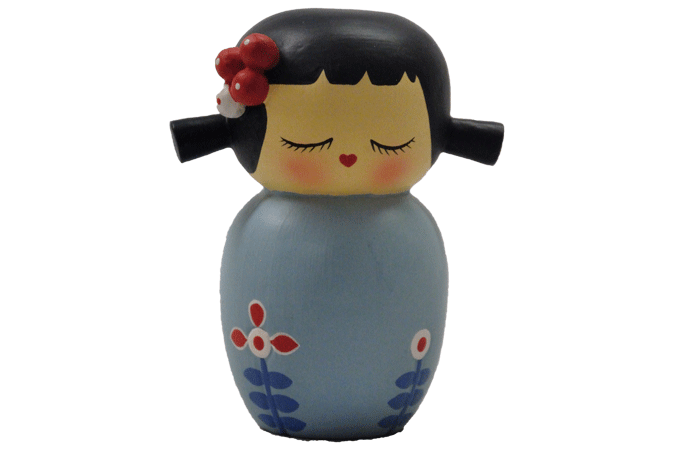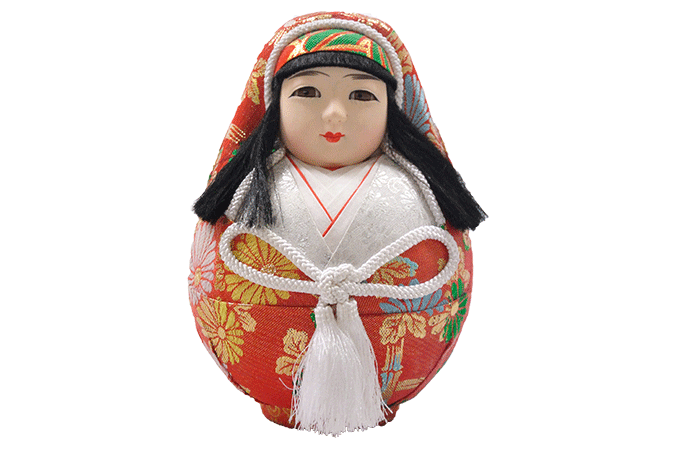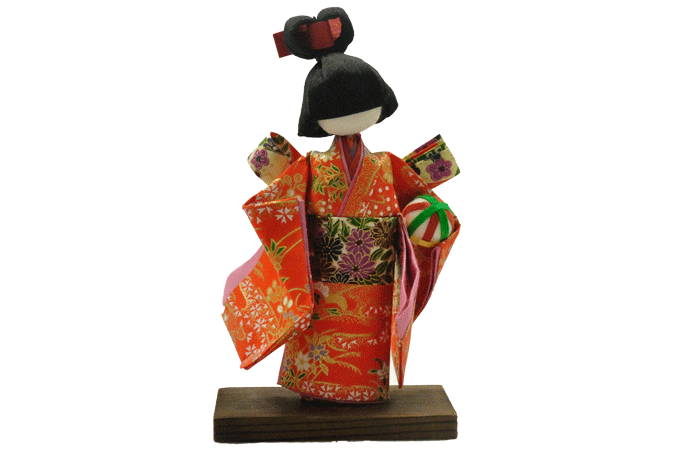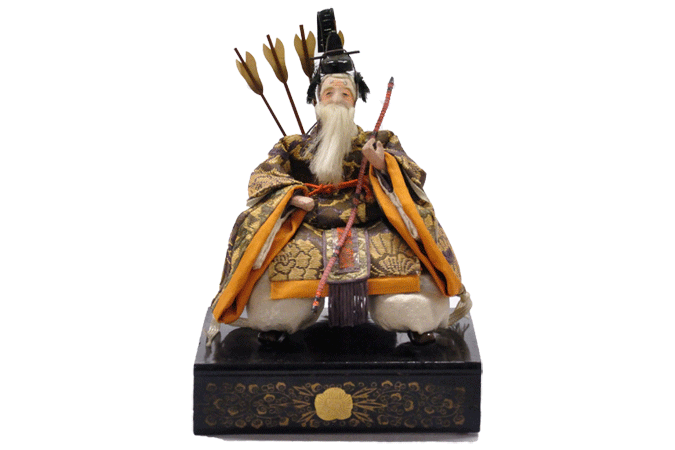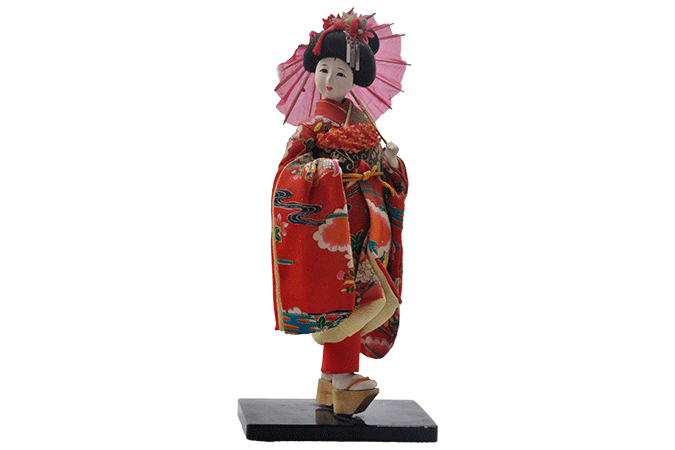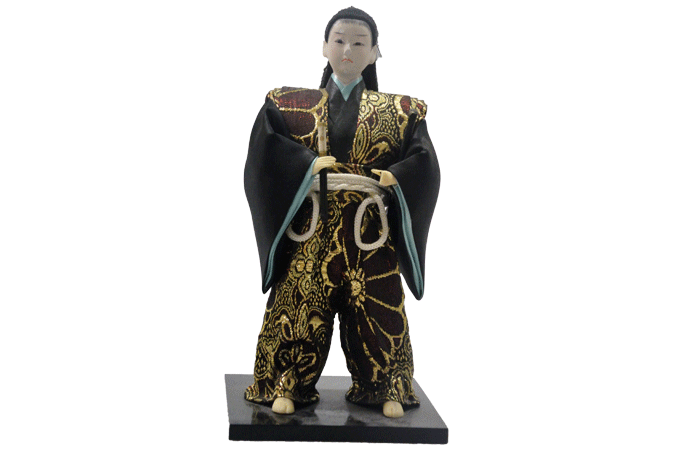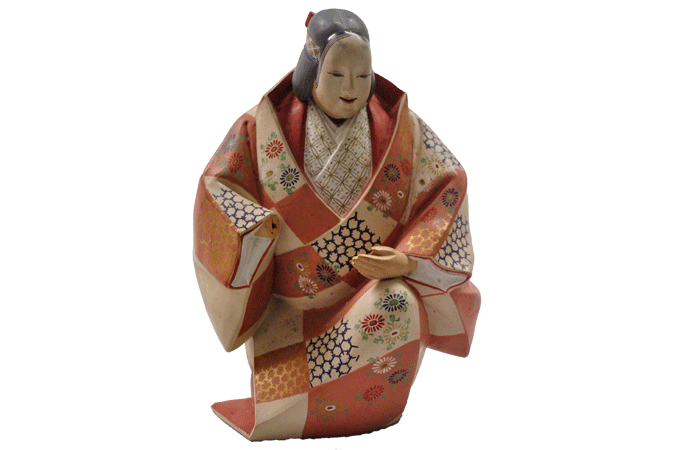The DORO NINGYO collection of Japanese dolls
Dolls have a long tradition in Japan whose history can be traced back until the late Jōmon period (about 800 b. Chr.). These early dolls are called Dogu 土 偶. They consisted of terracotta and represented largely females. In excavations, several different characters were found mostly in the same place. These figures are often lacking a body part (for example a leg or an arm) and they were found during excavations. The Dogu are often decorated with geometric patterns and some have big and round eyes, which are reminiscent of snow oggles of the inuit. There are still many different theories about the role of the Dogu. It is still not clear whether the figures served as substitutes for human beings or whether they were part of fertility rituals.
For the Kofun period (ca. 3rd to 6th century), other puppet-like figures, namely the haniwa 埴 輪 which consist of unglazed clay, are typical. These are grave figures, which, however, were found for the most part outside the tombs, namely on the barrows. In the later Kofun period, they represented in larg part humans and animals, but there are also representations of buildings.
With the arrival of Buddhism in Japan and the end of the Kofun period, important changes in the character of the dolls took place. The dolls were reduced to simple representations of people, without much ornamentation. The katashiro 形 代 were made of different materials and used at funerals. The function of katashiro changed with time from representation of humans towards a protector function. This doll form continued to evolve into the nademono 撫 で 物, doll, which is used for rubbing on the body to eliminate impurities. Many such purification rites were introduced from China to Japan, as well as the Joshi 上 巳 which also were rubbed against the humand body and then swept down the river. This ritual developed in the Edo period (1603-1868) to the so-called hinamatsuri 雛 祭 り.
With the import of watches from Europe during the Edo period, there was a great increase of knowledge about mechanics in Japan and was applied to manufacturing of dolls. The Karakuri puppets か ら く り 人形 - were the first automatic dolls. These dolls are still referred to as the predecessors of the modern robots. In 1662, the first theater was opened with these Karakuri dolls in Osaka. However, this form of theater did not last long and was soon replaced by the Bunraku 文 楽 or Ningyo jōruri 人形 浄 瑠 璃. Both species differ substantially from the earlier, simplified forms as the katashiro or nademono. They are larger with up to 150 centimeters in height and look very similar to a real human being . Eyes and the mouth parts can be moved and the doll can be, for example, transformed into a demon. With a few exceptions, they were not used for ritual purposes.
Traditional Japanese dolls like musha Ningyo 武 者 人形, isho Ningyo 衣装 人形, hina ningyo 雛 人形 and the Bunraku dolls were most often made of wood, usually cypress wood, and prepared and dressed with clothes specially designed and manufactured for the dolls'.. Some dolls were made entirely of fabric, many puppet-like characters, such as the Daruma were made of papier-mache or paper. There are also figures, which were prepared from clay, such as e.g. the hakata Ningyo 博 多人 形. Today, most dolls are made in such a traditional manner.
The present collection consists of about 970 dolls and doll-like objects and is one of the largest collections of Japanese dolls. They can roughly be divided into seven groups (Kokeshi, Daruma, Shiori-anesama or paper dolls, Musha Ningyo, isho Ningyo Hina Ningyo and others). The kokeshi こ け し are the largest group with 387 objects. The collection stands out not only by its variety of objects, but also through the various puppet types and their production techniques. It offers an interesting and varied insight into the world of Japanese dolls.
References:
For further reading, we can particularly recommend the book "Ningyo. The Art of the Japanese Doll" by Alan Scott Pate, 2005, Tuttle Publishing, Boston (USA).
There is also a more detailled print version (in German) available with a description of this "DORO NINGYO" collection. There, the reader finds a wealth of references and relevant citations. In addition, translation into German of all the japanese words/text on the dolls is available there. We are happy to send for free PDF copies of this catalogue to the interested readership: "DORO NINGYO" by Gianera S, DeSousa C and Krapf R. published December 1, 2016, Liestal (Switzerland), private publishing.
